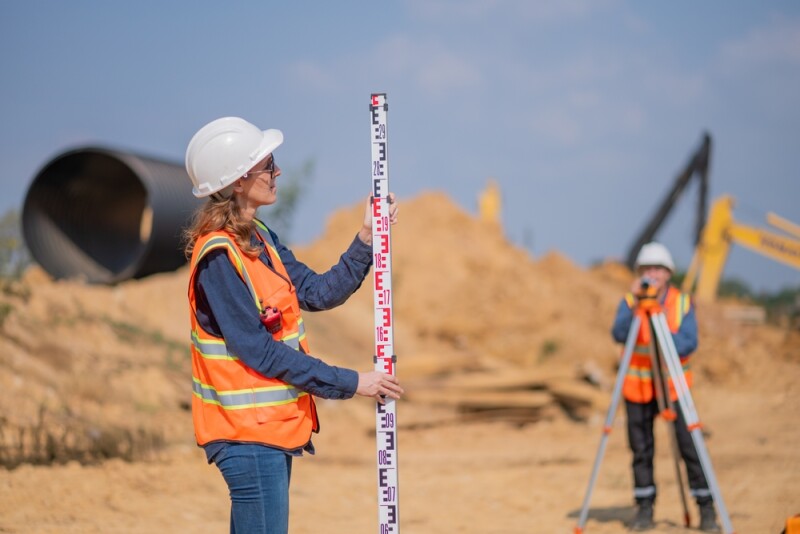During an April 16 Geo Week News webinar, Aaron Addison, Executive Director, World Geospatial Industry Council (WGIC), reported that the overall demand for qualified geospatial workers is strong and getting stronger. In fact, he said that there are between 20,000 and 25,000 job openings in the space, and “that's forecast to basically double in the next five years.”
But times can change—and quickly.
According to Geosearch CEO Jessica Touchard, who also took part in the webinar, demand for geospatial employees remains high globally and in some sectors, but changes in economic policies, particularly in the US, may be having a profound impact on the job market. Touchard reported that recent months have seen a dramatic downturn in certain sectors of the market.
“There certainly is a labor shortage in some positions, like programmers, data collection, land surveying, even some environmental field or GIS positions,” Touchard told Geo Week News. “But within the last 90 days, we’ve seen some drop off in hiring by firms who might be nervous about some of the current economic uncertainties.”
Touchard also cited recent cuts to federal programs and government-funded projects, that have normally supported a critical need for geospatial professionals at all levels, as being a concern for companies.
“In addition to companies putting a pause on some of their hiring activities, there are many federal employees entering the market who were recently laid off or chose the federal buyout packages causing a lot of resumes to flood the marketplace. Competition for fewer openings among more job seekers is heating up.”
This tightening up of the US geospatial job market has forced job seekers to take new approaches to finding employment. According to Touchard, creating a strong professional network is a crucial first step.
“The first thing I always recommend to anyone who I'm talking with is to really build their network,” she stated. “It can be as easy as creating a network on LinkedIn, joining local professional organizations, or connecting with people in your area. Building a local network of people who employ GIS people within your community and surrounding areas, like civil engineering firms, is a really good first step for job seekers.”
She said that these networks offer important paths for job seekers to follow when marketing themselves to firms. Through these networks, individuals can connect with professional references, highlight project management skills or client-facing experience, and more.
“You can use LinkedIn, participate in events like Geo Week, or volunteer on geospatial organization committees. I think that's probably the best way to stand out,” Touchard said. “That way, you often find out about new roles before they are even advertised and when you are seeing a position at a company, you can leverage the people you know in that firm even if they're not the hiring person. Let your connections know how excited you are about the role and how much perfect your capabilities would be for the job—because if there's 60 people applying and you're the only one that somebody mentions in a meeting, it could help!”
Beyond making connections and networking, Touchard recommends that geospatial professionals highlight their ancillary skills. “With geospatial companies, I would definitely let them know if you have lidar, GIS, programming, or data processing skills,” she said. “I would also highlight domain expertise. For example, if you’ve processed lidar data for civil infrastructure projects or utility projects, let them know. Some people work for companies that do a little bit of everything, and they have exposure across the board. Mentioning these specific projects in your resume can help.”
While the current challenges for job-seeking geospatial professionals can be daunting, employers and recruiters are also having a hard time sifting through the high volume of resumes and finding the right fit for their open positions. “It can be very overwhelming,” Touchard said. “If we post a position on our website, we can get over 300 applicants within a day or two.”
To properly evaluate these applications, Touchard said it is important to define what you want internally and determine exactly what the job requires. “I think when talent was scarce, people wanted to be a little bit more flexible with who they might bring in,” she stated. “But now, whether you’re looking to fill a mid- to senior-level job or a technical or sales position, you need to strongly define what you want in that person so you can be more targeted in screening resumes and conducting your interviews.”
Touchard said that some recruiting firms have turned to sophisticated technical approaches to help with the vetting process—and seen mixed results. “There are some tools that we've employed to help us, including newer AI applications used for sifting through resumes,” she said. “However, without the proper human-in-the-loop oversight some recruiting firms end up with useless data. There's some ‘AI fighting AI’ in terms of some of the applicant tracking systems. We selectively use AI tools and carefully parse the resumes to really see who has the skills and experience hiring companies are looking for.”
While Touchard is concerned with the current slowdown in the geospatial job market, she, like Addison, is optimistic that companies and the government will soon reignite their hiring efforts. “Ultimately, the need for skilled geospatial and remote sensing professionals at all levels is going to grow!”






